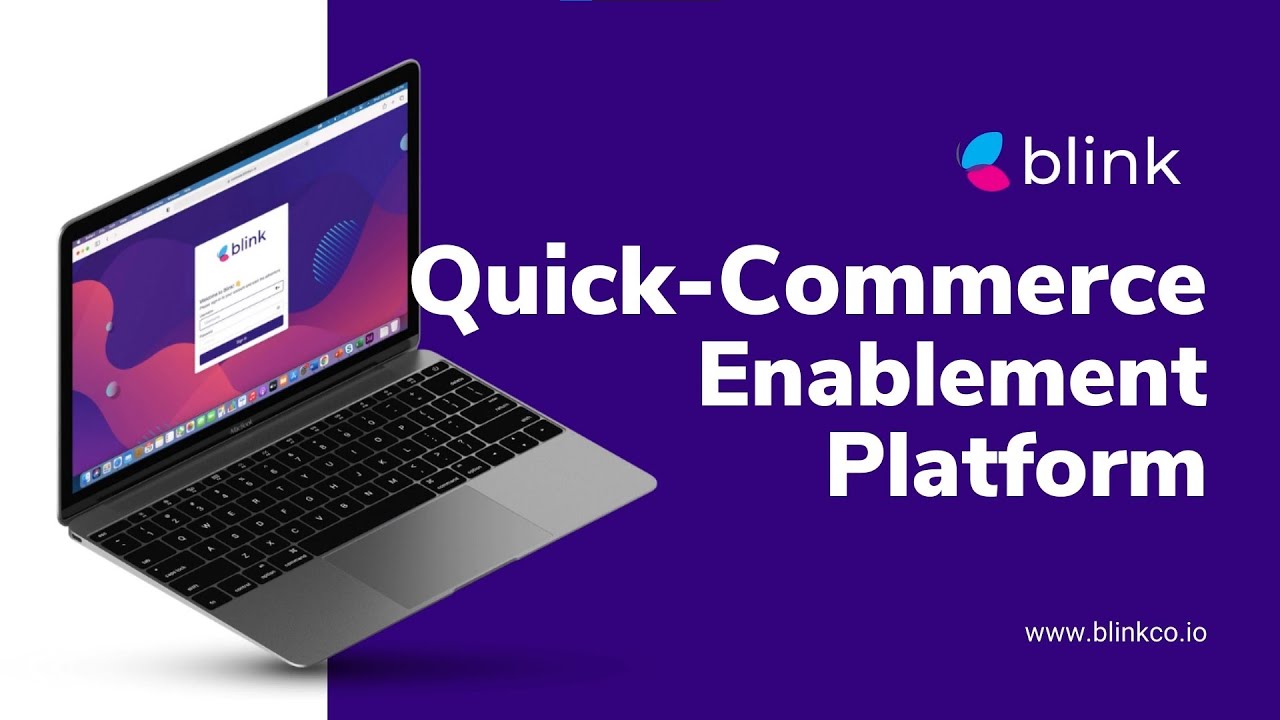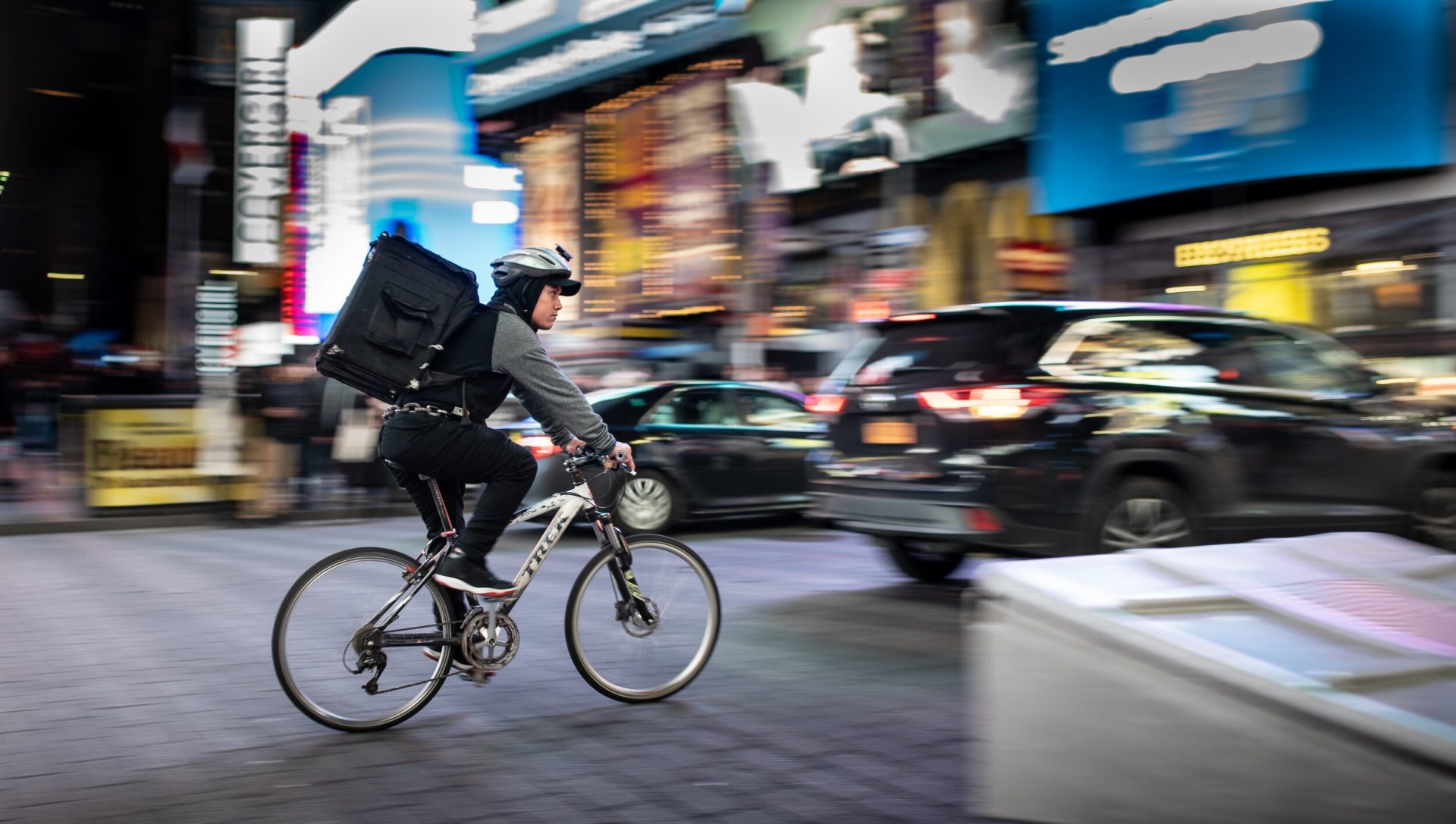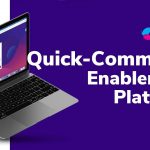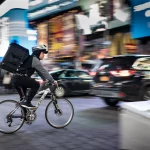Online ordering trends have been on the rise for the past few years. Ever since the pandemic outbreak situation happened alongside a globally mandated lockdown, consumer brands have picked up the pace on online orders and deliveries.
Right now, the good news is that many restaurant owners and consumer retailers have improved their business models since the inception of e-commerce. As soon as the realization kicked in that internet-based shopping for customers is more than just ordering online, businesses have sprung up on their ability to tap into everything that the quick commerce landscape has to offer (*which is the modern version of what business owners would call e-comm).
In 2022, the modern consumer will be ever-demanding of instant deliveries.
From online shopping deliveries to takeaway food, the quicker a customer receives an order, the better it is for these businesses.
With the changing landscape of deliveries, the arrival of quick commerce is something that shouldn’t come as a surprise.
The Ever-changing eCommerce Landscape
From day one of online commerce, consumers have always sought out vendors that offered the best value for money. The rules were simple. Best quality, best price, and strict adherence to market rules.
Such vendors were expected to be the most successful.
Fast forward to the present times, the factors for generating optimal revenue have drastically changed. The business capable of delivering its product and services the quickest would win the battle for scalability to gain precedence over competitors in 2022 and beyond.
There is a fast-evolving category of commerce that is a subset of the more commonly known E-Commerce sector.
Q-Commerce A.K.A. Quick Commerce
As the name suggests, qCommerce is the next generation of eCommerce where the entire trade of products depends on the speed of delivery.
Whether a business can deliver in as quickly as fifteen minutes is the tiebreaker between a deal or no deal.
This can be directly attributed to the COVID-19 pandemic with the rising demand for doorstep delivery of essential consumer goods. This is a sector that has witnessed an explosion in terms of organic business growth.
All major industries ranging from manufacturing to hospitality have had a bad patch due to the pandemic.
However, businesses that have been leveraging quick commerce remain relatively unscathed by the resulting aftereffects of the pandemic.
Market Share of Quick Commerce
The increasing market share of qCommerce based businesses is clear for all to see.
From the increasing number of fulfillment centers of eCommerce businesses to the increasing number of regional F&B aggregator services.
We are fast approaching a point where the traditional brick-and-mortar model of retail will soon become increasingly sidelined, and they (retailers, food & general business owners) will need to diversify their business stream to ensure top-line stability.
Concepts such as ‘checkout counters‘, ‘discounted stores‘, and ‘self-service‘ enabled the growth of the first generation of commerce.
Similarly, ‘just in time’ and ‘drop shipping’ did the same for eCommerce.
In the case of Quick Commerce, it would be concepts such as ‘Machine Learning,’ ‘Delivery of Goods Through Drones,’ and ‘ The Internet of Things‘ that would be the digitization tools and concepts that companies would have to explore.
4 Reasons Why The Quick Commerce Landscape Is Good for Businesses
1. High Feasibility Factor(s)
All thanks to low-cost platforms these days, it is relatively easier for food businesses to operate online. For instance, Blink Co, being a quick commerce enablement platform, charges the lowest percentages to restaurant owners. Not only does that enable online startups to scale their business, but also helps them to use Blink’s technology at full potential.
The upfront investment to establish an online restaurant is really low – i.e. if you haven’t spent thousands of dollars on having your own food business website and mobile apps developed. Also, since quick commerce allows such operators to work independently through smart store management tools, their dependency on managing brick and mortar establishments is decreased.
With the passage of time, as you become more successful, you can create custom content, add CTAs, run promo campaigns and make full use of the online outreach factor without overspending.
2. Time Optimized Order Deliveries
Another beauty of the quick commerce landscape is time-optimized deliveries.
Despite the fact that the pandemic situation during the last two years disturbed the businesses’ usual operating method, the owners were quick enough to diversify their offerings. Doing so helped such business owners to use the power of technology to become more focused on optimized deliveries.
Questions, such as; what’s your most favorite restaurant menu item, which customer has the highest number of purchases in any given month, highest vs lowest-performing meal combo deals, and vice versa serve as a gateway towards a better and delightful customer experience. For underperforming items, you can revert back to data-driven metrics through Blink’s dedicated dashboard to upsell through online promotional deals, discount/ voucher codes, etc.
In addition to the aforementioned perks, quick commerce enablement also helped to shift the average consumer’s behavior. Many vendors noticed an increase in their grocery and food delivery orders during the pandemic because more and more people began to use direct online ordering portals to fulfill their requirements.
Meanwhile, companies became focused on delivery optimized models where they fulfill orders by stacking them as per availability in inventory stock. Those orders that are not available at the primary warehouse, are rerouted to the forwarding bases that are closer to customers location. Today, vendors available on app have been able to increase their order supply outreach by at least 50%, while being able to reduce delivery times for each respective order.
In other words, quick commerce enables a frictionless business model where not only order fulfillment time is at a record low but also has a higher customer retention spectrum.
3. Multi Locational Order Fulfillment
In an ever-growing online food business, it is all about acquiring new customers, serving them to the best of your abilities, and ensuring that they’re retained for as long as possible. How does a business make it possible to cover all the bases towards a delightful customer experience?
Good question.
Multi-location order fulfillment is one of the key aspects of helping businesses increase their outreach towards customers. Through a quick commerce-enabled platform, customers not only enjoy the luxury of placing food or general item orders 24/7 from anywhere in the world, but also have the ability to connect with you through multiple delivery forwarding channels.
For instance, if we take the example of Amazon.com, there’s always a probability for items to be stocked at different locations. These companies fulfill orders in parts, using the FIFO model. The initially available items are relegated to the customer straight away, while other items are packed and discharged according to the readily available inventory at the nearest delivery forwarding base.
Similarly, Blink uses the same approach for its vendors. Whether it’s a food order, or a general retail store item, the order is fulfilled according to the stock available in the inventory at the vendors’ side.
Vendors, on the other hand, are able to track their inventory status through the back end to eliminate errors from occurring. Inventory analytics is followed up with the ability to backup and monitor inventory data, and location tracking, etc.
Other than that, the quick commerce enablement factor makes full use of the smartphone and social media connectivity. These days, many businesses have integrated stores on their social media pages. This way, prospects do not have to redirect to the food business’s or brands’ official website to place orders. Instead, everything can be added to an online social media store page cart and purchased directly without spending extra time on fulfilling the nitty-gritty details.
A lot of customers want to experience the in-store facility that restaurant social media pages have already set up. Effortless ordering is one aspect of the quick commerce landscape that will go a long way in years to come.
4. Hypergrowth Enablement
Online stores are a great way of complementing the typical shopping experience that brick and mortar food businesses are already known for. Since such businesses operate online as well, they have full control over the digital version of ‘word of mouth marketing where piggybacking on the viral buzz effect is super-efficient.
Most of the businesses these days are equipped with geofencing technology backed up by automated order processing. These two variants, alone, eliminate the involvement of the human factor to a great extent since orders are automatically queued and their notifications are sent accordingly to the respective vendors.
Similarly, websites that maintain a blog on the side, bank on value-driven content and insights that cater to different audiences. If these content clusters are answering questions that customers are searching for, they become curious about the services and the products that the said business has to offer. Most of the online traffic for value-driven content comes through search engines and digital marketing where the business only has to maintain focus on creating value for potential customers.
Then again, direct email marketing, influencers with online social media moguls, and such other factors supplement the overall positive effects of the quick commerce landscape.
How to implement Quick Commerce?
Quick commerce is essential for your business in 2022 & beyond especially if you’re targeting professional and younger people. It will also make sense for CPG companies with broad audiences.
Consumers will come with the mindset of expecting super-fast delivery, so it would be a great idea to implement a system of Quick Commerce now!
Here are 3 essential steps for your qCommerce to-do list:
1. Set Up Localized Hubs
If you need to pack and deliver goods within a 1-2-hour time range from the point of order, you need to be located pretty close to your business.
For this exact reason, qCommerce heavily relies on local warehouses that can serve customers within close proximity.
Most quick commerce-enabled businesses are based in cities and employ their own fleets to deliver goods.
The duration of two-wheeled deliveries is less likely to be impacted by heavy traffic or road blockades. They don’t have to find parking spaces either. As a result, they facilitate timely deliveries.
Alternatively, businesses can enlist the help of third-party logistics services.
To cite an example, in China, ‘Alibaba’ has taken a unique approach by creating hundreds of brick-and-mortar ‘FEMA’ stores. These stores act as qCommerce hubs that deliver within a 30-minute time span. In addition, they also offer Omni-channel services, such as collection points, and in-store scanning that can be integrated with online payments.
2. Businesses Need To Carefully Select Their Quick Commerce Stack
In the current ecosystem, qCommerce works best for specific product lines.
Immediate delivery makes sense for food, cosmetics, drinks, and other CPG products that customers use every day.
Medicines and gifts are dubbed as “other” niches of products that could be ideal for quick commerce delivery.
3. Have The Right Software In Place
To make quick commerce work for your business, it is essential to have the right software set in place, a quick commerce enablement platform being the best and most obvious choice.
With a Quick Commerce platform like Blink, your business will have the right set of software products and features to prevent stockouts.
Don’t Forget to Test, Learn and Improve
Although technology enables businesses with all kinds of tools, there’s always a learning curve involved in the customer conversion process. For your first few efforts, don’t expect the outcome to be flawless.
It is okay to make errors, but test, learn and improve through data-driven customer analytics to see how the performance of your business can be improved over time.






